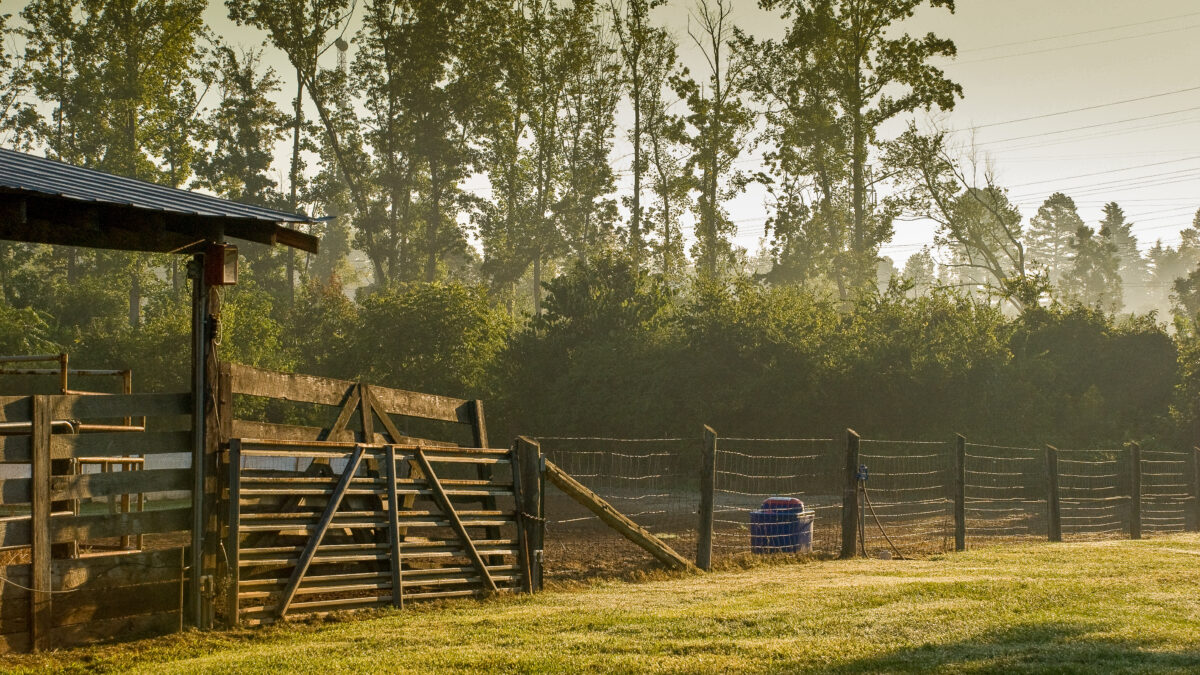Sharing Your Story from Inside Your Fencerows
Zippy Duvall
President

photo credit: North Carolina Farm Bureau, Used with Permission
Zippy Duvall
President
Over the years, I have shared how my dad encouraged me to get outside my fencerows to make a difference on my family farm and beyond. That’s been a guiding principle for me as I think about how I can continue to share my farm’s story and yours with folks who do not have much—if any—experience with agriculture. Often, sharing our story and getting outside our fencerows means leaving the farm to meet with people where they are—from the market down the road to the local chamber of commerce to your state capital all the way to the White House. Sometimes, getting “outside your fencerows” actually means staying on your farm and inviting the public and policymakers to see firsthand how farmers care for our land and animals.
America’s farmers and ranchers have such a great story to share, and it’s critical for the public to better understand what goes into growing the food, fiber and renewable fuel that drives our nation. Our research shows that the public trusts farmers, but we should never take that trust for granted. We need to be actively building on that trust by reaching out and inviting folks to see what modern agriculture looks like. And that kind of engagement yields even greater trust. Our research shows that trust increases by 20% for adults who have some level of personal experience with a farmer or rancher. What’s more, those who have had an opportunity to engage with or meet a farmer, are much more likely to have a positive perception about farming, including how farmers care for their animals and the environment.
As we head into a new year, with a new Congress and a new administration, it’s important for us to engage.
What does it look like to bring the public inside your fencerows? Perhaps you can host a school group or another community focused event on your farm, like a farm-to-table dinner. You can also extend a personal invitation to local leaders to visit your farm to help them see how vital agriculture is to our communities and our country.
I also believe it’s important for me to practice what I preach. So recently, I had the pleasure of hosting the acting director of EPA’s Office of Agriculture and Rural Affairs, Ms. Venus Welch White, on my family farm. She stopped by on a trip through the area to see firsthand how we have restored the land on my family’s farm.
While it would have been much easier to schedule a chat in Washington, the impact would not have been the same. Rather than just telling Ms. White how we have restored our farmland since I was a boy, I was able to show her the green pastures on my farm and the healthy cattle grazing there. She saw the results of three generations of work to turn unproductive land into rolling hills that now support livestock while reducing erosion.
We were also able to hop in a truck and visit my neighbor down the road for her to see a dairy farm and the sustainable practices in place there. And more importantly, now she has farms and faces to think of when she is working on policy and regulations in Washington. Farm visits like this also build stronger working relationships with government officials, while providing them with the real-world examples they need to consider when weighing policy decisions.
As we head into a new year, with a new Congress and a new administration, it’s important for us to engage. Let’s invite more leaders, lawmakers, and government officials out to our farms and ranches to get their boots dirty. It’s critical for folks in Washington, and in your state and local governments, to get to see firsthand how the rules, regulations, and programs they are working on impact farms like mine and yours.
There’s just no substitute for getting outside the office and onto a farm or ranch to see firsthand how farmers care for our land and animals. I’d like to amend my dad’s advice to me. Yes, let’s keep on getting outside our fencerows, but let’s also find ways to bring others in to see all the hard work and care that goes on inside our fencerows to keep our food supply safe, sustainable and secure.